RESTO CITROËN DS23
Launched at the Paris Motor Show in 1955, the game-changing and show-stopping Citroën DS was a fabulously fresh and futuristic creation that made its contemporaries look staid and stale by comparison. The DS was a technical and stylistic ‘tour de force’. Not only was the body svelte and slippery (complete with detachable panels) and achingly beautiful, Citroën’s engineers had for the most part eschewed conventional mechanicals, particularly when it came to the suspension design.
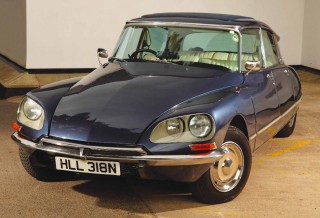
The DS wafted along on a very advanced hydro-pneumatic system that caressed and cosseted its occupants, no matter how rough the road. What’s more, this ground breaking set-up boasted a unique adjustable ride-height facility that enabled the car to be raised in order to negotiate really harsh terrain. When the DS came to rest, turning the ignition off would result with the car gracefully sinking on its suspension until the bodywork almost kissed the floor. You could even drive a DS with one rear wheel removed. Plus, thanks to the way the suspension could be raised, changing a wheel was a breeze. Naturally, the DS was front-wheel drive, as all Citroëns had been since the arrival of the Traction Avant (Light 15 in the UK) in 1934. It also boasted a wide front track and these two features endowed the DS with excellent handling and stability. Then there was its innovative hydraulic ‘central nervous system’, which powered the ultra-sharp power steering, inboard front disc brakes and clutchless gearchange.
The only area where Citroën short-changed the DS (due to technical and fiscal reasons), was under the bonnet. A flat-six, air-cooled engine was proposed and prototypes built, but it was launched with a 1911cc, three-bearing, four-cylinder unit that was rooted in the Traction Avant. It wasn’t a bad engine; it’s just that it was technically decades behind the rest of the car. Such a hushed, unstressed and advanced car really deserved a hushed, unstressed and more advanced engine.
However, things eventually improved. From 1965 the DS was equipped with a more up to date range of four-cylinder, five-bearing engines (available in 1985cc and 2175cc displacements) and a fuel injected version arrived in 1969. From 1970 some models enjoyed the option of a five-speed gearbox. With the arrival of the last-of-the-line and prestige DS23 in 1973, the engine grew to 2347cc, with fuel injection being standard on the range-topping DS23 EFI Pallas, a car that was finessed to near perfection.

Learning curve
Our feature car is a truly delectable DS23 Pallas EFI and is owned by Christopher Wilson, who admitted he actually cut his classic teeth on a VW Beetle and went on to own, restore, maintain and use a succession of air-cooled VW’s as daily drivers, including campervans.
“I found my first Beetle in the Exchange and Mart, recalled Christopher fondly. “I bought it to replace a rather tired Fiat 1100. I had a whole string of VW’s, but it was the campervan versions that were favoured by the family. In fact, our family’s association with the campervan came about through necessity.
“I was in the Royal Navy at the time and money was really tight. But in 1982 I was able to buy a 1964 split-screen campervan. I reckoned it would be a cost-effective way of having family holidays, as we’d previously had some great adventures in hired campervans. It cost just £50 and came with a spare engine.
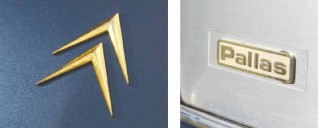
“It wasn’t a good buy though, as it needed a lot of work and the body was rotten.
But I taught myself to weld and repaired the bodywork as well as overhauling the mechanical components. This was all done on our driveway. I also did the upholstery and moulded a GRP raised roof to give us more headroom. Over a twenty-five year period, we went on to own a number of campervans. Great fun and a wonderful learning experience too.”
Smitten
People choose classics for a variety of reasons. In Christopher’s case, it was because of a familial connection. “My DS ownership came about due to my late father,” reminisced a smiling Christopher. “Whilst on a trip to Paris in the ‘Sixties, he had a taxi ride in a DS and was immediately smitten. I can clearly remember him eulogising about this fabulous French car, its remarkable appearance and its wonderful ride quality.
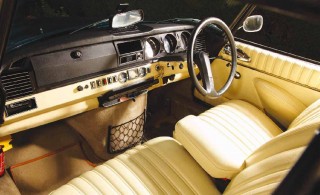
“Funnily enough, although he had an intimate knowledge about the DS, he never actually owned one, although he remained passionate about this car and its many variants throughout his life “His enthusiasm certainly rubbed off on me and I’ve had a soft spot for these big Citroëns ever since. So much so, that when I was approaching retirement and contemplating purchasing a classic to restore, one car was uppermost in my mind: a DS!”
Ma king sure
Christopher was a former Commander in the Royal Navy and was latterly employed as an account director in the defence industry, where he worked for GEC- Marconi and then Finmeccanica. With this background, it’s fair to say he’s not the kind of person who does things by halves – or rushes headlong into a new project. “Prior to purchasing a DS, I was keen to ‘calibrate’ myself and learn all I could about the car and find out whether it really was the right choice for me. To facilitate this, I joined the Citroën Car Club and went along to a number of events.
“At one event Guy, my son and I were lucky enough to meet Paul Chapman. He’s a lovely chap and a fount of DS knowledge. Paul kindly showed us around his DS and even took us for a blast across the bumpy showground.
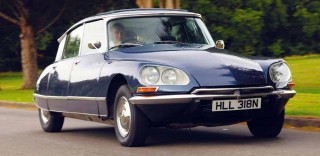
“The way the car behaved, the astonishing ride quality and its sheer character made a terrific impression on us both. Like my father, we were smitten. But I also did a huge amount of reading about the DS, which meant I would be clued up about the model when it came to viewing potential purchases.”
First choice
Clued up, and convinced that a DS was the right car Christopher began scanning the classifieds. Mind you, it wasn’t any old DS he was searching for. What Christopher coveted was a range topping last-of-the-line DS23, EFI, BVH Pallas. As luck would have it and not too long before his retirement, Christopher found a suitable candidate, so decided to find out more about the car before going to view it.
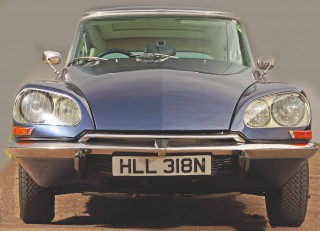
“I spotted HLL 318N on eBay,” added Christopher. “This was back in 2007 and the auction had already reached £3500. I contacted the seller and learnt that he was using the car on a daily basis and that it was in good order. After agreeing to view the car, I asked the vendor if this was really the right car for me, would he stop the auction and I’d buy it there and then.
“I was overseas at the time and arranged to see the car as soon as I was back from the Middle East. Well, a few days later there I was breaking all the car buying rules, lying on the ground, at night, in the rain, in a pale grey business suit, having a good prod and a poke around the DS!”
“Even though the conditions were far from ideal for viewing, I could see that it was a really good car. I offered him £5000, which he accepted. To sweeten the deal, I told him that I was going to restore the car to show standard. He was delighted with this and also gave me a few spares, along with a fat manila folder that contained the car’s complete history.
“We shook hands, said our goodbyes and I jumped in the DS and headed off back home to Gloucestershire. The car drove beautifully, much better than I’d anticipated and I knew I’d made a good choice”.
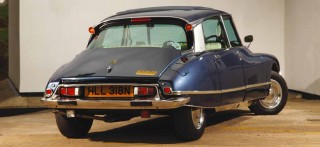
Crunch time
A good choice indeed. Christopher, who intended to restore the car, had bought well. Nevertheless, as previously alluded, this owner thinks before he acts. Which is why instead of getting stuck into its restoration, Christopher decided to drive the car, take it to shows and generally immerse himself in the DS experience. “I bought the car in 2007 and used it as it was, albeit doing regular maintenance and making a few improvements,” remarked a thoughtful Christopher, who added how it was all going so well.
“Then one fateful day back in 2009, I was sat in the car in the garage and I engaged reverse and blipped the throttle. Well, the car jumped back a touch but unfortunately, the driver’s door was slightly ajar and it hit a pillar, crunching the door in the process!”
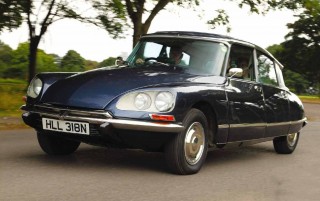
Although hugely irritating and the cue for a few un-officer like lower deck expletives, that concertinaed door was not quite the disaster it first appeared. In fact, it proved to be the catalyst that prompted Christopher to tackle the restoration.
“I decided there and then to take the car off the road and get stuck into its restoration,” elaborated Christopher. “The first thing I did, was to ensure that I was up too speed with the welding, so I enrolled on a course at night school and learnt about how to use a MIG welder.”
Part and Parcel
Having stripped the car down and ascertained exactly what needed doing to the bodywork, Christopher swiftly came to the realisation that a number of replacement panels would be needed.
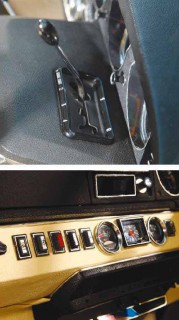
“As you can imagine, new panels aren’t exactly plentiful for these cars, certainly not in the UK,” he exclaimed. “I started looking on the Internet for good second-hand ones and came across Leboncoin, a French classified advertising site. Cutting a long story short, I found two people selling DS panels and parts, so I asked them to email photographs. They did this and the photos showed all the parts required to be in decent condition.
“To collect them, we hired a long wheelbase, high-top van and drove to France, a trip we called this the ‘DS Dash’ and rounded up all the parts! Our hoard included several front and rear wings, an under pan, various bits of glass, suspension bits and bobs, wheels and a host of mechanical parts. The van was crammed full to the brim and if I remember that was September 2009.”
Back together
Between September 2009 and June 2012, Christopher single-handedly rebuilt the DS, including fitting the replacements panels. These had been all repaired where necessary and along with the rest of the bodywork, were repainted to an extremely high standard by Clive Horden at C & R Vehicle Repair Centre. Originally cream with an aubergine roof, Christopher elected to have the car repainted Yachting Blue, a Porsche Panamera colour. The result certainly looks stunning – très chic in fact!
The DS is spot-on mechanically too. Remarkably, although every single part was removed with the intention of overhauling them, Christopher discovered that the majority were in perfect working order. “The wheel bearings were absolutely fine, so I simply cleaned, greased and refitted them,” recalled Christopher. “The discs, calipers and pads were excellent too. The same was true of all the suspension, even the high-pressure twin-walled steel pipework and displacers, although I did replace some of the low-pressure nylon return hoses, as they were showing some signs of age and the rear ‘coffee pots’ needed renewing. These are just rubber bellows with return pipes that catch the fluid. In fact, mechanically, the car was in excellent order.
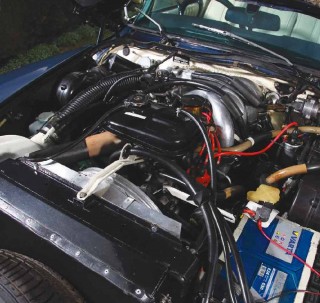
“That said, I did have to renew the steering rack. It’s a very complex affair on these cars and is effectively two hydraulic switches – turn-right on, turn-left on. I tried to rebuild it myself, but just couldn’t manage to get the seals on. These are machined to one micron and require a special tool to fit them. So I ended up buying a reconditioned rack and also fitted a new hydraulic pump.
“I did some work on the engine too and fitted new big end bearings (the mains were fine) new rings and had the head skimmed. The valves were in really good order, as were the valve springs, although I did check and measure them. In fact, the mechanical rebuild was mostly a matter of checking, cleaning, adjusting and refitting. I had a long shopping list of parts that I’d thought I’d need. As it transpired, I needed very few.” With the car painted and in prime mechanical condition, Christopher turned his attention to the interior. In truth, it was wearing its 108,000 miles reasonably well.
But Christopher, befitting his Royal Navy background, wasn’t about to ‘spoil the ship for a ha’p’orth of tar.’
“Dayne, at Touch of Class, did the re-trim including fitting new carpet, headlining and sunroof,” he mentions. “The workmanship is great and it complements the exterior of the car beautifully. The exterior trim, which I mopped and polished, is mostly stainless. There are a few chrome parts though and I had these expertly re-chromed by Doug Taylor, in Weston-super-Mare.”
Stepping up
Since taking ownership of the DS and in order to make the car more useable on today’s roads, yet not detract from its underlying character; Christopher has undertaken a number of small and subtle upgrades. He’s made one big improvement too. Not that you’d notice it, unless you were fortunate enough to be travelling in the car.

“On some of the later models a five-speed manual transmission was an option, but Citroën never offered a five-speed semi-automatic”, interjected Christopher. “The standard four-speed semiautomatic is a bit fussy on the motorway. “As it happens, there’s a chap in Holland, Harry Marten Limmens, who has engineered a five-speed semi-automatic. We’d met Harry at an international Citroën meet in Harrogate a few years ago and had a good look at the conversion and were impressed “It seemed so good, I was eventually persuaded by the rest of the family to buy one. So, I removed my gearbox, put it in the boot of my car and the three of us popped over to Holland for a short break. Whilst there, Harry overhauled the gearbox and converted it to five-speed. It’s a very clever conversion that works seamlessly and makes the car even more relaxing. To complete the conversion, I’ve had a ‘Boite 5 Vitesses Hydralique’ boot badge made.”
Dream or Nightmare?
There’s no doubt that the DS is a complex car and this has put many people off buying one. Yet Christopher has found that it’s very reliable and that the majority of the mechanicals are straightforward to work on. Even the famed and fabled suspension isn’t the stuff of nightmares.
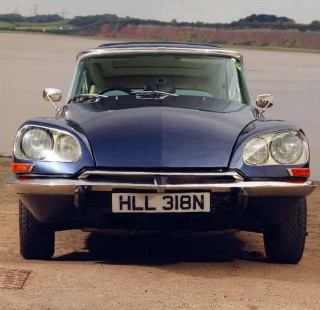
“Early cars used red coloured, castor oil-based fluid which was hygroscopic,” explained Christopher. “Unless this fluid was changed on a very regular basis, corrosion and damage ensued. However, in 1966 (1968 in North America) a green coloured, non-hygroscopic, mineral fluid was introduced. This solved the problem. It’s a very reliable and tough system.”
“The same is true of the rest of the car. To be honest, it’s proved to be a revelation and is huge fun to own and drive. I’m so glad that I bought this DS and restored it. It’s a dream come true.”
Thoughts
Like Christopher, ever since I spotted my first DS, which in my case was over four decades ago whilst walking to school, I’ve had huge admiration for these wafty, quite wacky, yet truly wonderful creations. No doubt the current DS-badged iterations are very good cars. Nevertheless, stylistically in terms of their character and their technicalities, in my mind they can’t hold a candle to a classic DS like the one Christopher’s owns. This car set the scene back in 1955 and is still doing so today.
Vive la DS!
The Facts 1973 Citroën DS 23 EFI Pallas
ENGINE: 2347cc, 4-cylinder, OHV. Bosch D-Jetronic fuel injection. (M23)
POWER: 141bhp at 5500rpm / SAE gross
TORQUE: 148ft/lb at 4000rpm / SAE gross
TOP SPEED: 122mph
0-60mph: 10.1secs
TRANSMISSION: 5-spd, semi-automatic
SUSPENSION: F: Independent, Hydro-pneumatic R: Independent, Hydropneumatic
BRAKES: Inboard discs front, drums rear, power assisted.
ECONOMY: 24mpg
WHEELS/TYRES: 5 x 15in steels with 185 x 15 Michelin XAS tyres
WEIGHT: 1179kg
CLUBS & SPECIALISTS
C&R Vehicle Repair
Centre 01594 841313
www.candrvehiclerepair.co.uk
Touch of Class
01443 814432 or 07779 574025 www.toctrim.co.uk
Harry Martens Limmen +31 (0)72 505 5570 www.ds-vitesse.com/en
Citroen Car Club www.citroencarclub.org.uk/drupal
Doug Taylor Metal Finishing Co
01934 820454
www.dougtaylor.co.uk
Leboncoin www.leboncoin.fr

Removing the rear wings is an easy was to access the rear suspension and only requires a couple of bolts to be undone.
The owner of this DS was prompted to restore the car after denting a door while getting the car out of the garage. It may look complex, but the owner overhauled the DS’s engine himself.
There’s plenty of room in the front and back for long legged occupants in the DS’ generous sized cabin.
This DS benefits from a Dutch sourced five-speed semi-automatic gearbox conversion.
Despite the DS’ original styling dating back to the mid-‘Fifties, it’s still a very stylish looking car. The DS’s spare wheel neatly fills the sloping gap in front of the radiator.

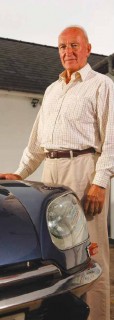
Owner’s Q&A…
What is special about this car?
Because it’s such an individual looking car and because it reminds me of my father.
What reaction does it get?
People wave, put thumbs up and take lots of photos. It gets a remarkable reception.
What Was the best moment of the restoration?
Probably when it came back from painting for the final time and I started refitting the panels and could see the car taking shape.
What are you most proud of?
That the restoration, it’s turned out really well.
What’s it like to drive? It provides a unique driving experience and is so comfortable and has great road manners. To be honest, it’s quite unlike driving any other car.





